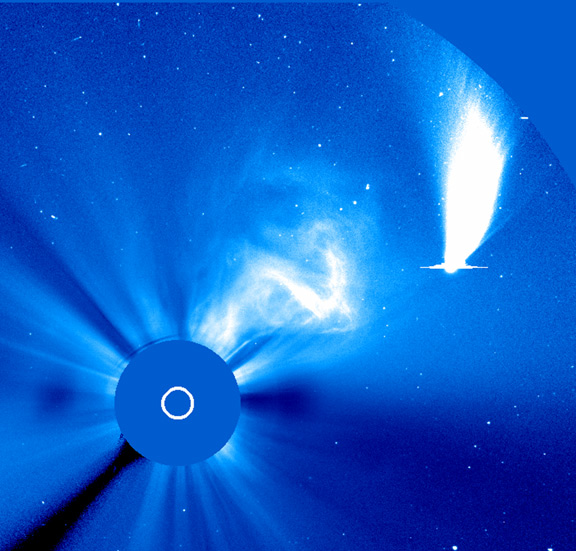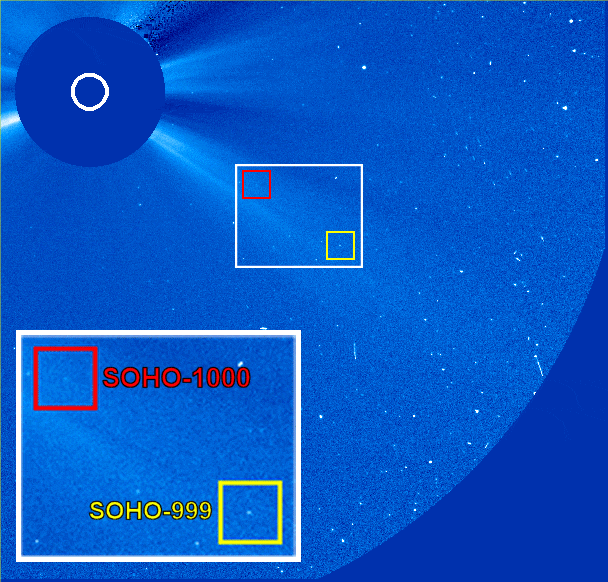Saturday, August 20, 2005
The 1000th SOHO comet

(image credit SOHO, comet NEAT, no this is not the 1000th comet).
One of the more unusual aspects of the internet age is using the internet to find comets. The Solar and Heliospheric Observatory (SOHO) keeps watch on our unquiet Sun in a halo orbit around the L1 Lagrangian point 1.5 million kilometers sunward of the Earth. Amongst the instruments are the LASCO coronagraphs, instruments that produce an artificial solar eclipse so astronomers can observe the activity of the corona. I've shown images from this instrument before in connection with aurora watching.
Now it turns out that the coronograph is sensitive enough to pick up comets as they pass by the Sun. Most are not as impressive as comet NEAT (C2002 V1) pictured above, but quite a few are picked up by the coronagraph. When the LASCO images were made available on the web, amateur astronomer Mike Oates soon spotted 100 comets in the archived images. Many other amateur astronomers soon found that they could trawl the images via the internet and find new comets from the comfort of their computers. Actually, it's a lot harder than it sounds, as most of the comets are faint, you have to do a bit of detective work to sort them out from noise and to get enough observations to get a decent orbit computed, but it is very cool. You can have a go yourself, follow the links here to find out how.

(the 999 and 1000th SOHO comets, image credit, SOHO).
Originally, astronomers thought that the SOHO craft might pick up a small number of "sungrazing" comets. But then amateur astronomers began combing the LASCO images, and it was soon apparent that there were lots out there, by 2002 500 SOHO comets had been found, and the numbers rose further, until the 1000th comet was discovered on August 5 by an amateur astronomer.
Most of these comets are faint, like the 1000th comet itself. Many don't survive passage of the Sun, disintegrating as they pass. And most are part of a few families of comets, which are thought to have arising from the breakup of a larger parent comet. These groups are the Kreutz (85%), Meyer (6%), Marsden (2%), and Kracht (2%) groups. The most numerous group, the Kreutz group, are thought to have their origin in the breakup of a comet in 1106 AD. Subsequent splitting and re-splitting of this comet as it passed the sun resulted in a swarm of fragments that follow similar orbits around the Sun.
So who actually won? I'll leave that to Tom to tell you in his post, as he beat me to publishing on the 1000th SOHO comet.



 Click to read about or order
Click to read about or order Click to read about or order
Click to read about or order Click to read about or order
Click to read about or order Click to read about or order
Click to read about or order




